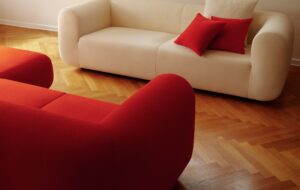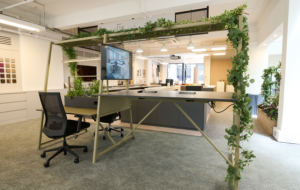
words Anna Bates
An elephant is hidden in the footrest of Jurgen Bey’s The Little Prince chair, one of 17 pieces that make up his show for Brussels gallery Pierre Bergé & Associés in June.
But it was “making rather than concept” that the Dutch designer wanted to highlight through the Witness Flat furniture collection, which was designed for an imaginary show apartment. “We wanted to work as they do in a fashion house,” says Bey. “We formed a team of 12 people, and then we started just building with the materials – which isn’t how we usually work.”
The raw materials all come from the Netherlands, and consist of various forms of wool – a homage to the fur workshop the venue previously housed – and timber including ash, beech and yellow poplar.
Pieces such as the wardrobe and light were constructed using crate-making techniques, lending them a raw, structural aesthetic. Other works – including the Pixelated chairs and stools – were a by-product of these pieces. “There were all these bits of wood we couldn’t use,” says Bey. “We started to sculpt with the wood. We rebuilt pieces using these small blocks.” The unconventional form of The Little Prince chair – named after the novel by Antoine de Saint-Exupéry – came from the fact that Bey “likes things that don’t fit”.
To boost the group mentality, each of the workers wore a felt apron engraved with his or her initials: “I wanted to have a group of people in which ideas grow,” says Bey. “I believe more in the collective than the individual.”
top image Pixelated chair

The Little Prince chair

Wardrobe

Construction light















